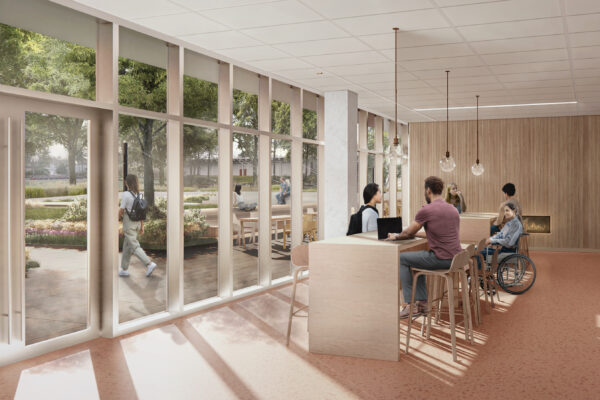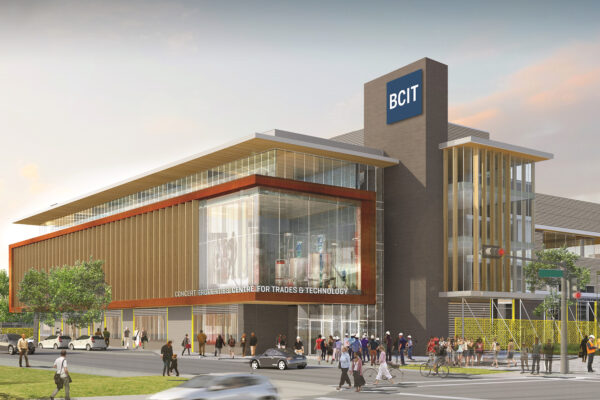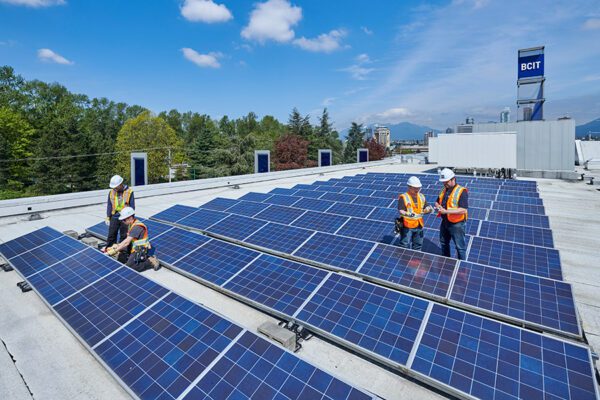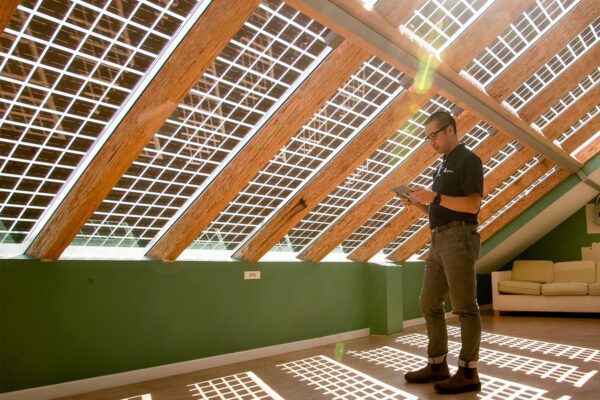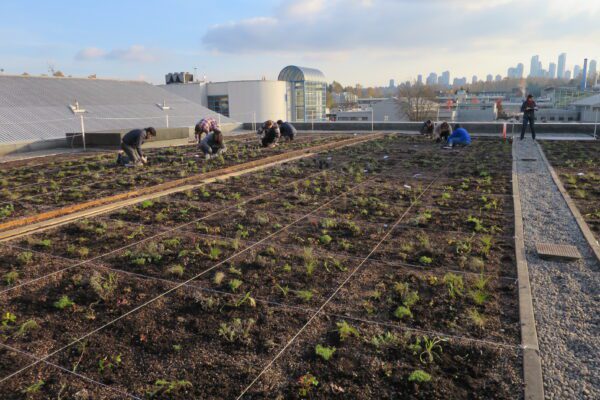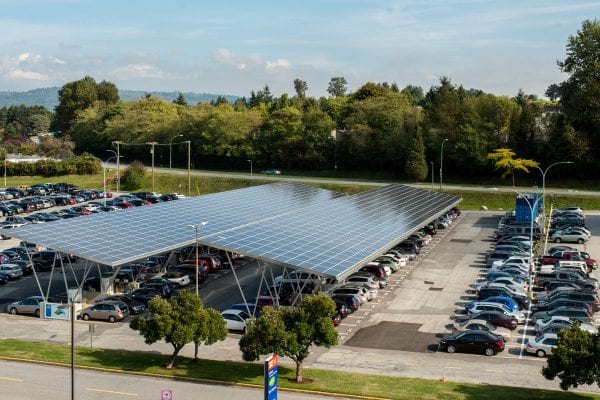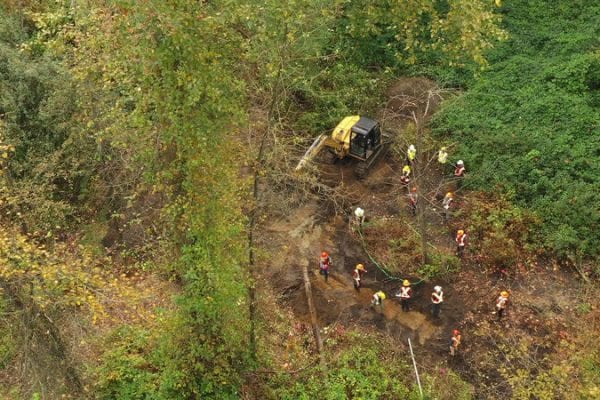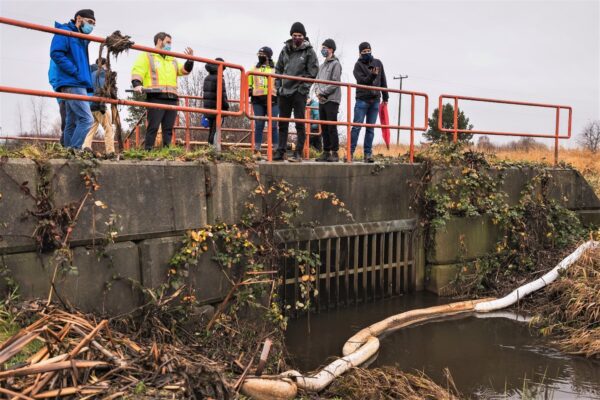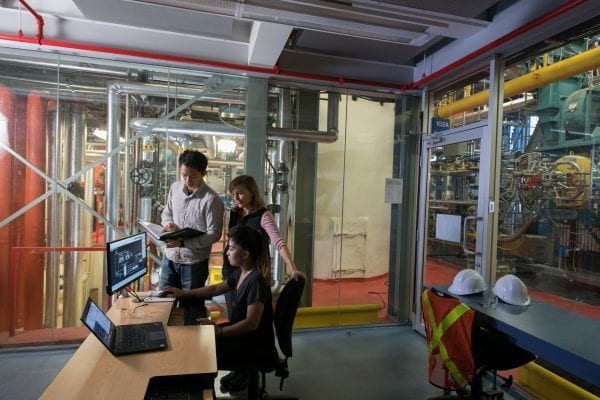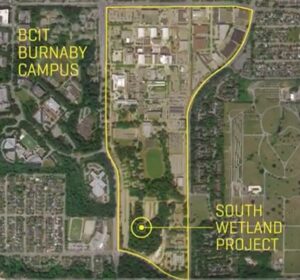BCIT has been working on a wide range of projects that offer opportunities for multidisciplinary learning on campus through Living Labs since 2007. These projects utilize the natural features, infrastructure, and operations of our campuses to advance sustainability.
New buildings, like the Tall Timber Student Housing and the Trades and Technology Complex, allow us to share experience of innovative construction approaches like mass timber technology, and passive house in partnership with leading industry consultants.
Our schools run Living Labs projects spanning topics from ecological restoration, power transmission and generation, to energy systems, building technology, and materials. These often make use of our existing infrastructure to test new technologies.
Highlights of current Living Labs
Tall Timber Student Housing
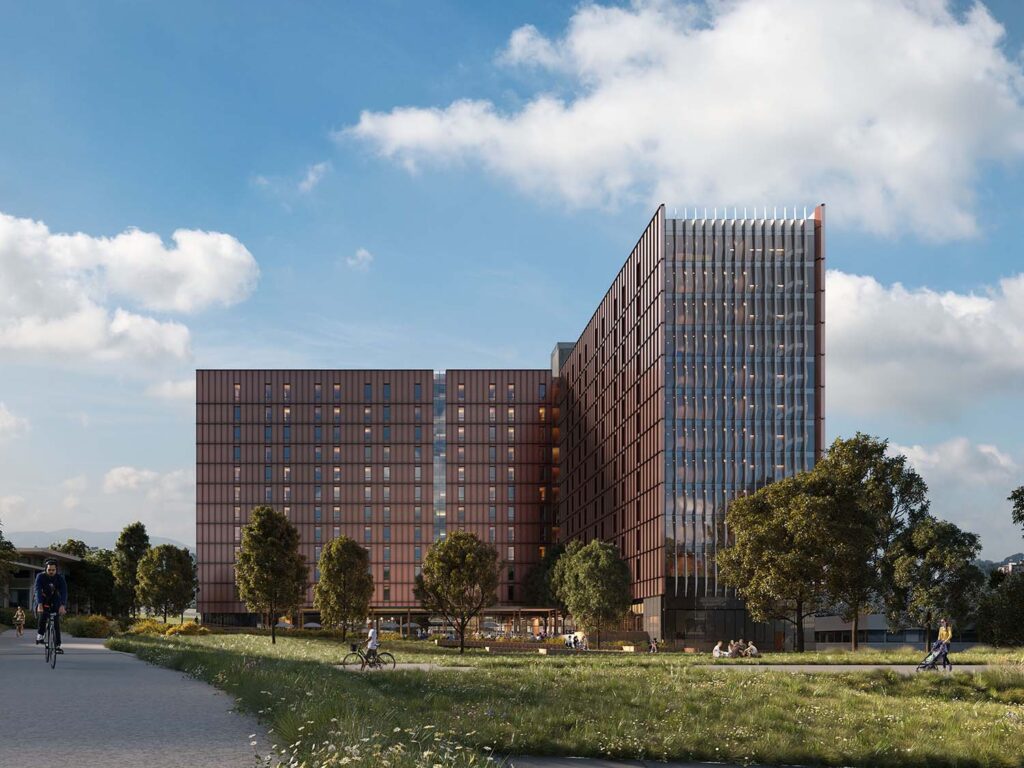
The Tall Timber Student Housing project will provide affordable, sustainable housing for 470 BCIT students. It’s the first new student housing on the BCIT campus in over 40 years. The interior courtyard will link to the reimagined South Commons to enhance the pedestrian experience on campus. The use of mass timber construction will ensure this is a sustainable building as well as a beautiful centrepiece for the Burnaby campus.
Trades and Technology Complex
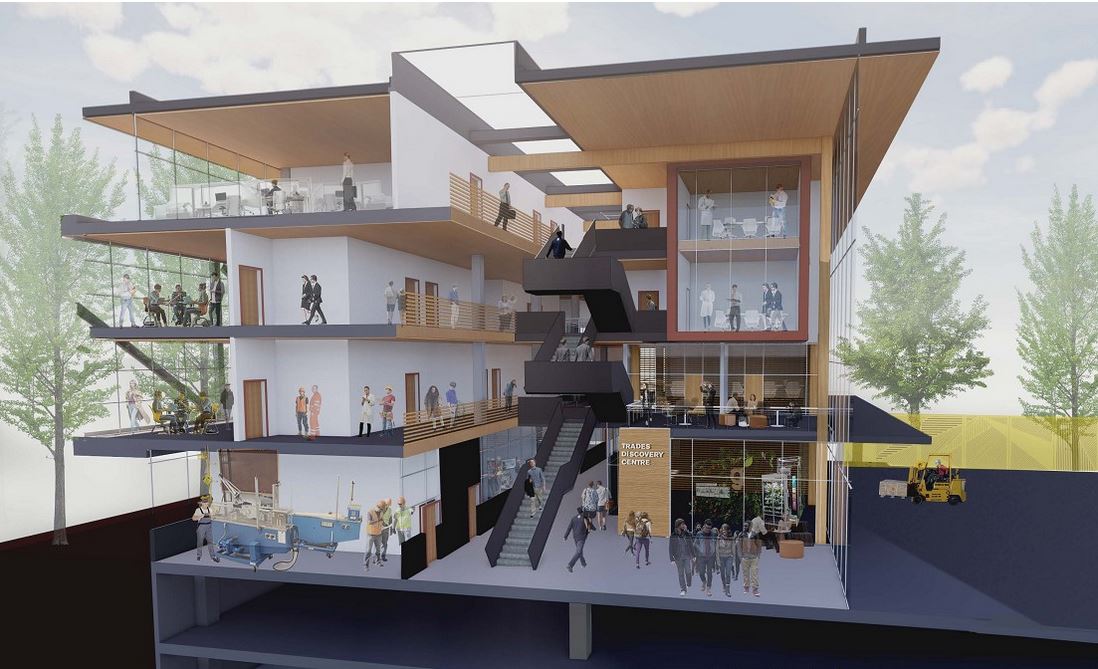
The Trades and Technology Complex project will create a world-leading, adaptive learning environment for 21st-century trades education. Anchored by the Concert Properties Centre for Trades & Technology, the Complex includes multiple elements including the Robert Bosa Carpentry Pavilion, a Marine and Mass Timber Workshop, and a Campus Services Building. The project also includes the daylighting and ecological restoration of a section of Guichon Creek that is currently culverted.
Campus Energy Upgrade Projects
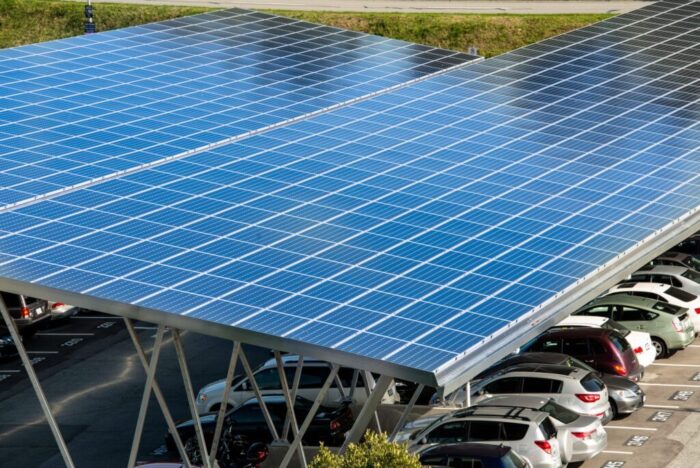
New developments meet leading environmental sustainability standards including LEED gold, passive house approach and Canada Green Building Council (CaGBC) net-zero certification. BCIT also has a cross campus strategy to reduce Greenhouse Gas (GHG) emissions with projects including a complete renewal of the SE8 central heating plant will support the transition from fossil fuel to renewable energy source(s) and create a low-carbon source of heat at the centre of Burnaby Campus.
Factor Four
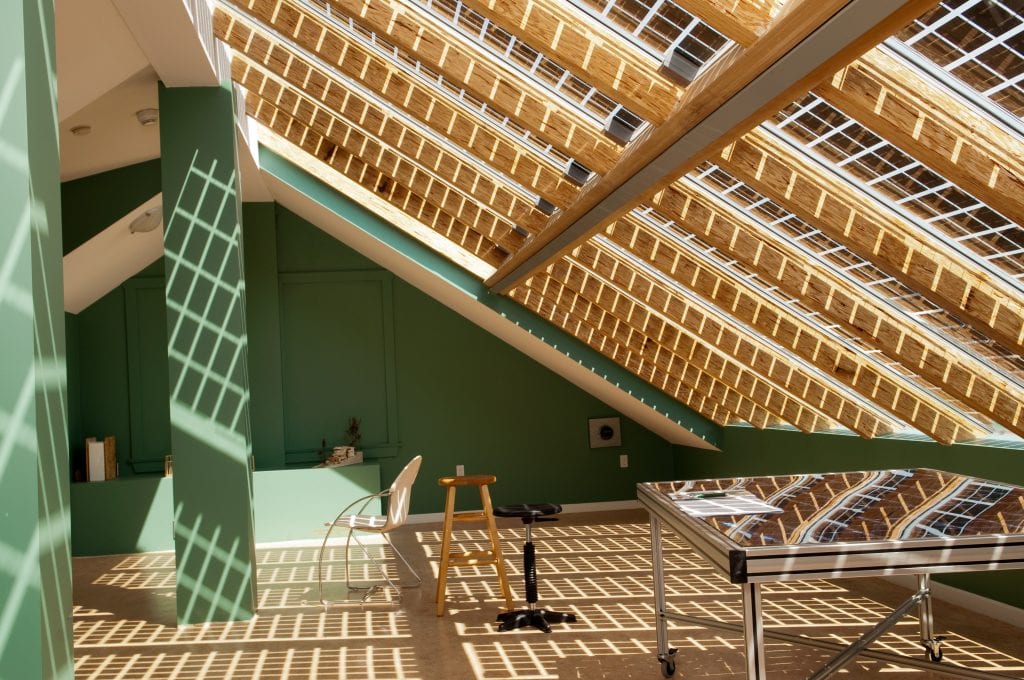
Factor Four is a multi-building initiative designed to explore techniques for reducing energy and materials consumption by 75% without compromising service levels. It is led by the School of Construction and the Environment in the buildings it occupies at the Burnaby campus: the “Factor Four Area”. The majority of projects are completed under the living lab concept, allowing student to learn as we implement solutions.
Elevated Lab
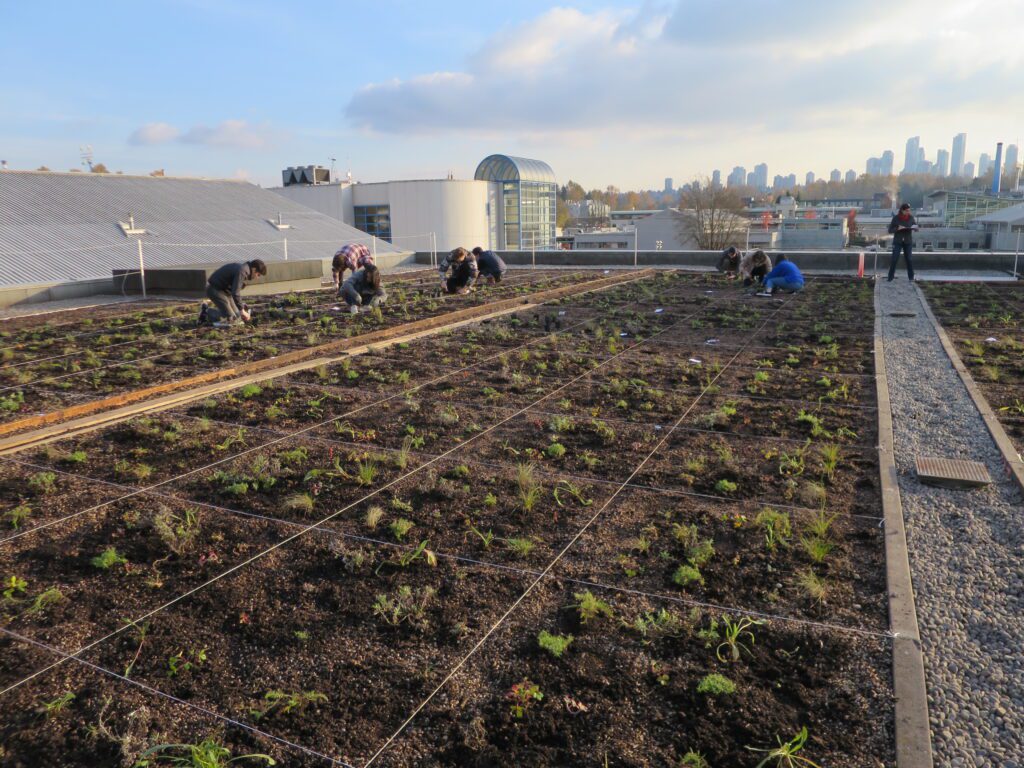
The Centre for Architectural Ecology supports the academic, design, and construction communities to understand architectural and building acoustics and advance living architecture technologies in this region. The Elevated Lab serves as a living lab and collaborative catalyst within and between various departments at BCIT, including Carpentry, Steel Trades and Piping Trades, as well as Forestry and Natural Areas Management, Indigenous Initiatives, Campus head chefs, and Campus Planning and Facilities and more.
Smart Microgrid
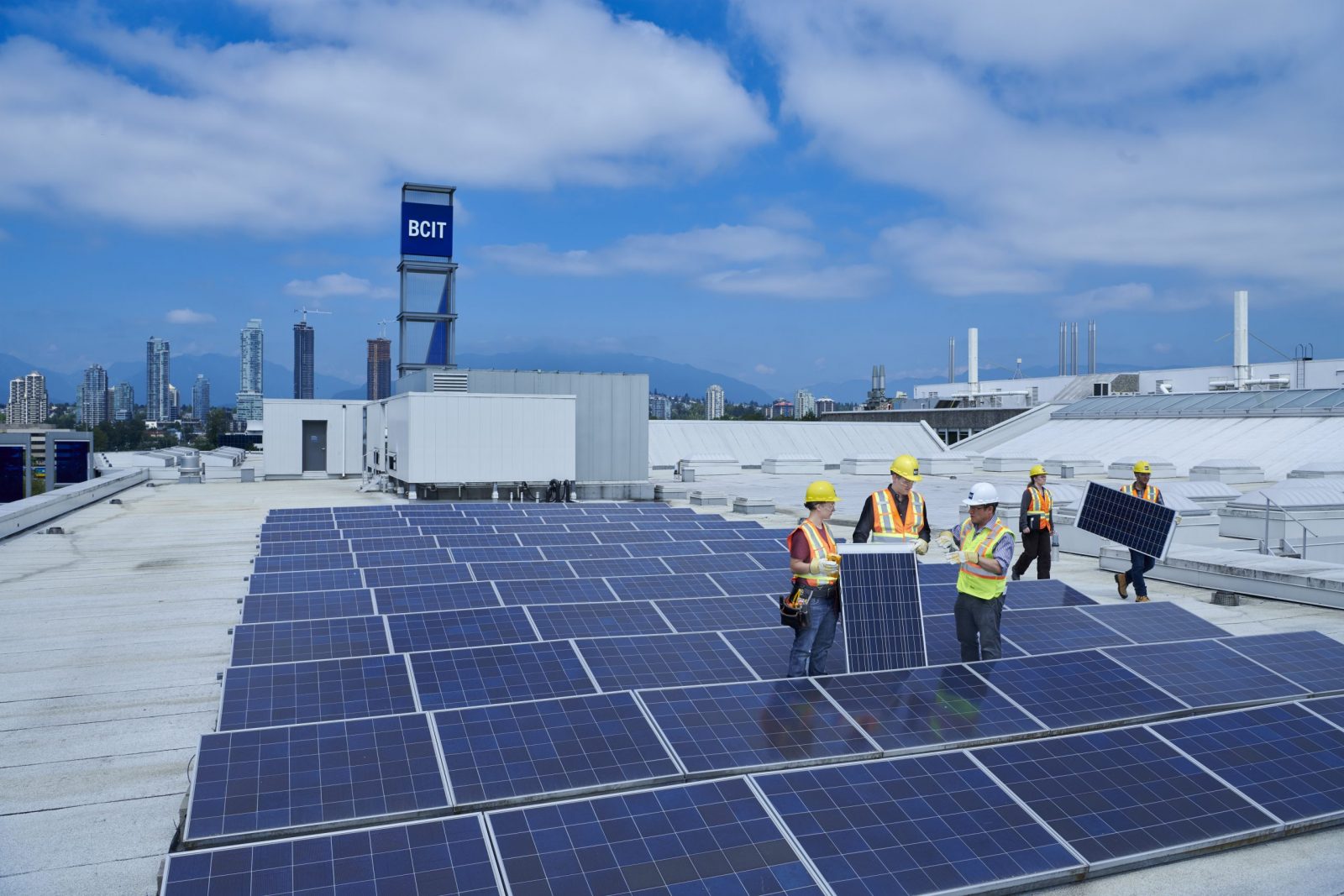
The Smart Microgrid Program is led by the Smart Microgrid Applied Research Team (SMART), and involves partners across BCIT, government and industry. Our unique smart grid infrastructure provides students valuable experiential learning by working with the technology as well as key processes needed to support resilient electrical grids. It is an ideal living laboratory as it includes many scaled-down elements of the future smart grid that students can work with to support their education. For example, students in the Master of Engineering in Smart Grid Systems and Technologies program utilize data collected from the Energy OASIS to investigate operation, reliability, and sustainability challenges and issues.
South Campus Wetland Ecological Restoration
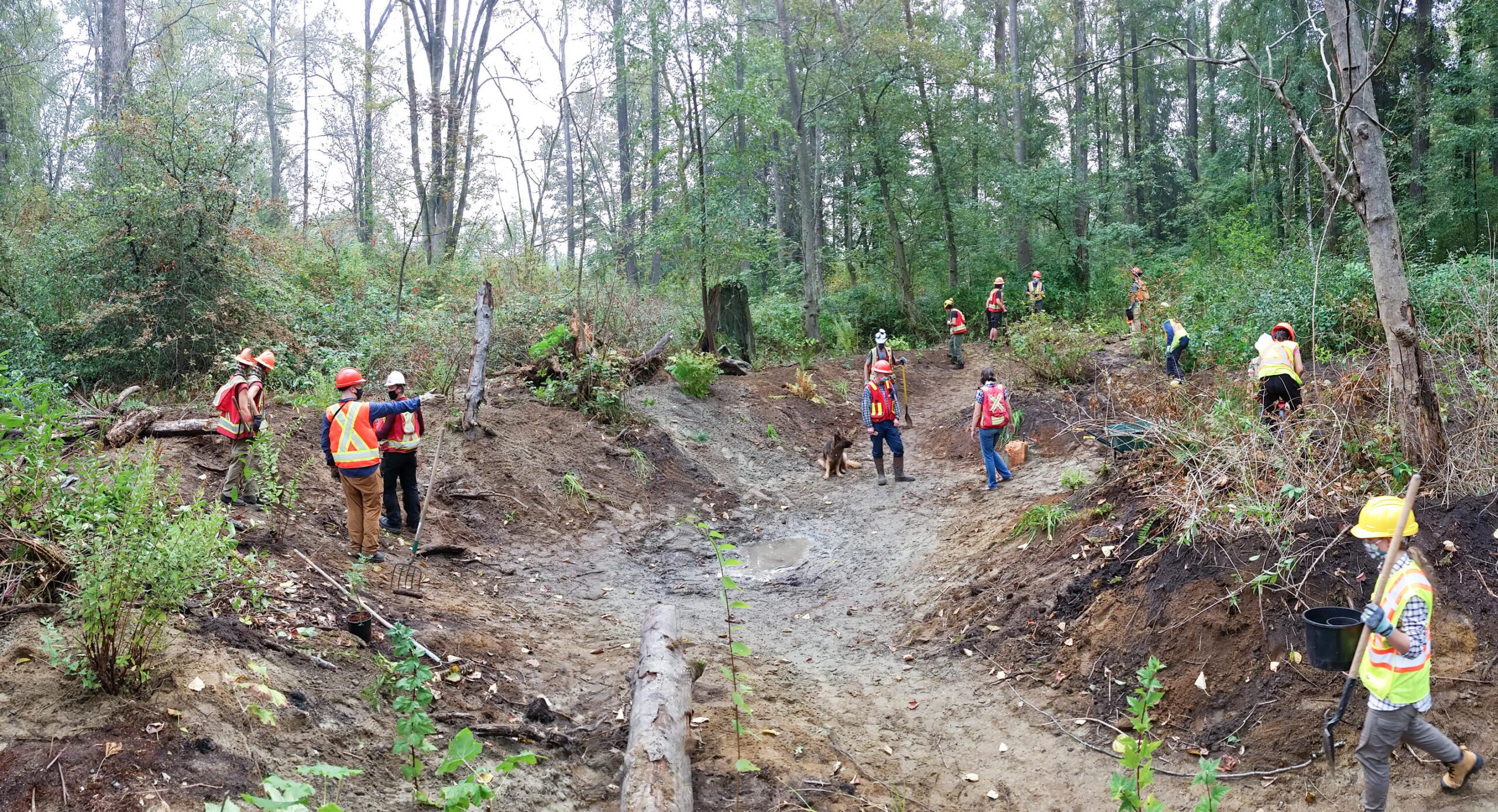
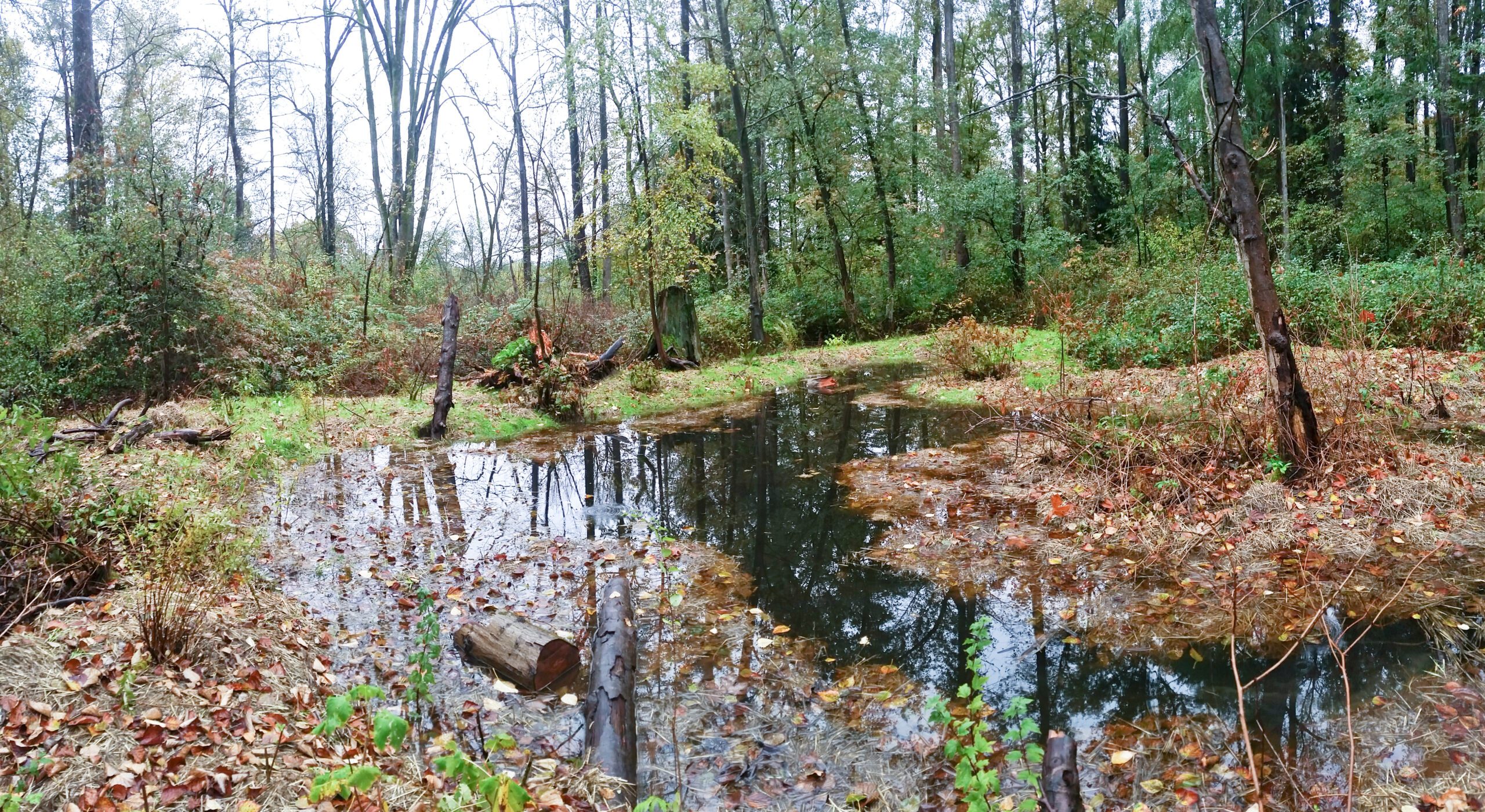
In September 2020, students from the School of Construction and the Environment’s Ecological Restoration, Forest and Natural Areas Management, and Fish, Wildlife and Recreation programs, worked together in collaboration with staff to expand a small wetland at the south end of the Burnaby campus near Guichon Creek.
The students who worked on the wetland, and others, have continued to use the area as a living lab, observing it develop and thrive over time.
Environmental Monitoring & Analysis Project
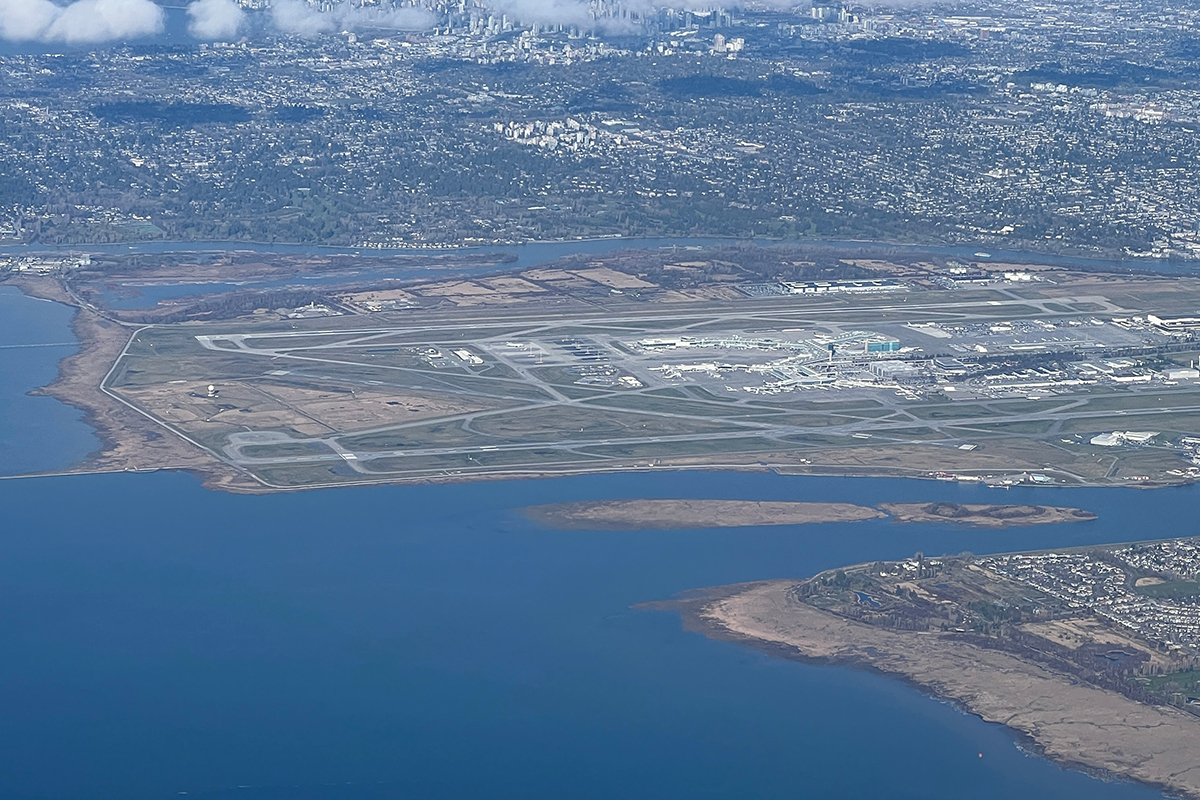
In 2022, students from the School of Energy and School of Computing and Academic Studies joined forces with the BCIT Centre for Internet of Things and the Vancouver International Airport (YVR) Innovation Hub to collaborate on developing a water monitoring system. The purpose of which is to automate the collection and analysis of water quality in the Fraser River around the airport.
Spartan Controls Centre for Energy Education and Research
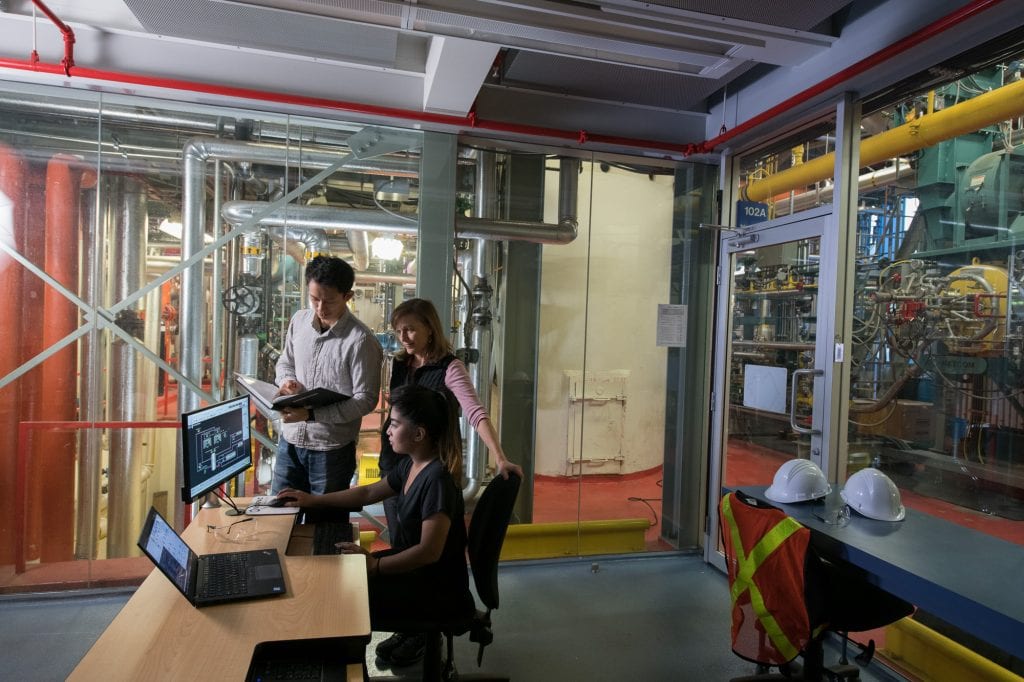
The Spartan Controls Centre for Energy Education and Research uses a state-of the-art power generation facility to explore energy production, distribution and management. The project is led by the School of Energy.
